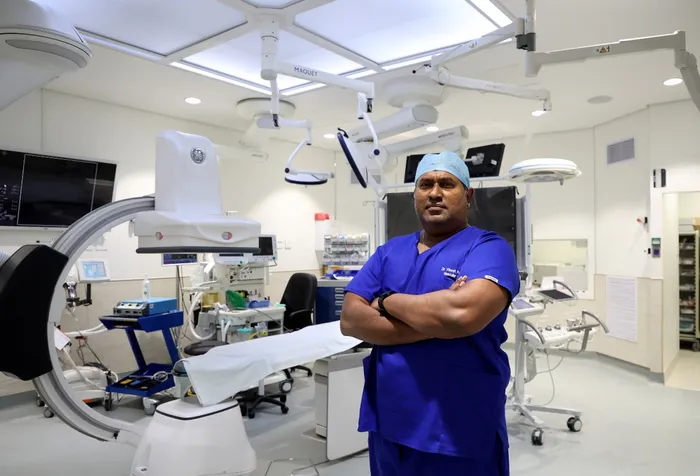Warning on deadly drug-resistant bacteria threatening diabetic and renal patients

Patients with diabetic foot infections face increased risks due to antibiotic-resistant bacteria, warns Dr Padayachy.
Image: Gemini AI
South Africa’s leading vascular surgeon, Dr Vinesh Padayachy, has warned of a rapidly growing threat posed by carbapenem-resistant Enterobacterales (CRE), a dangerous group of bacteria that no longer respond to some of the strongest antibiotics available.
As World Antimicrobial Resistance (AMR) Awareness Week runs from November 18 to 24, Dr Padayachy, who practices at Lenmed Ethekwini Hospital and Heart Centre in Durban, joined global experts in raising the alarm over what he calls a “silent yet deadly enemy” increasingly affecting vulnerable patient groups.
Speaking during AMR Awareness Week, Dr Padayachy said resistance to carbapenems, considered among medicine’s last lines of defence, is escalating at a pace that should concern the public and clinicians alike.
“Carbapenem resistant Enterobacterales have developed resistance to some of our strongest antibiotics, the carbapenems that many consider the last line of defence,” he said.
“When bacteria no longer respond to these medications, infections become far harder to treat and the risks of amputation, long hospital stays, and even death increase.”
Dr Padayachy said the problem is most severe in two groups he treats frequently.
1. Patients with diabetic foot sepsis
These patients already struggle with poor circulation, nerve damage and slow wound healing, making infections common. But when CRE infects these wounds, he said, the situation becomes critical.
“When CRE infect these wounds, treatment becomes extraordinarily difficult,” he said.
“I have seen an increasing number of diabetic foot infections caused by resistant organisms. In these cases, the surgical work is only half the battle. The other half lies in choosing the right antibiotic strategy while optimising blood flow through vascular intervention.”

Dr Vinesh Padayachy
Image: Supplied
2. Patients with end-stage renal failure
Those relying on fistulas, grafts or catheters for dialysis are also in danger, as these access points enter the bloodstream and can become infected quickly.
“When a CRE organism infects a dialysis access site, it can lead to repeated graft failures, prolonged catheter use, or life-threatening bloodstream infections,” Dr Padayachy warned.
He said such infections often lead to more emergency procedures and fewer options for safe, long-term access.
Dr Padayachy identified several factors behind the rise in resistant organisms, including antibiotic misuse, patients not completing prescribed treatment courses, and the frequent hospitalisation of high-risk patients such as those with diabetes and kidney failure.
He added that global travel and inconsistent infection control contribute to the spread.
Dr Padayachy urged both patients and healthcare workers to take collective responsibility for protecting the power of antibiotics.
He advised patients to avoid taking antibiotics without a prescription, always complete treatment courses, manage their blood sugar levels, seek medical help early for wounds, and keep dialysis access sites meticulously clean.
“Preserving antibiotics is a shared responsibility,” he stressed.
“For my patients, especially those with diabetes or kidney failure, antibiotic resistance can mean the difference between healing and amputation.”
Healthcare teams, he said, must also remain vigilant through responsible antibiotic use, stronger infection-prevention measures, better patient education and closer collaboration across medical specialties.
“By protecting the effectiveness of these medicines today, we protect the lives and limbs of tomorrow’s patients,” Dr Padayachy said.
IOL News
Related Topics: